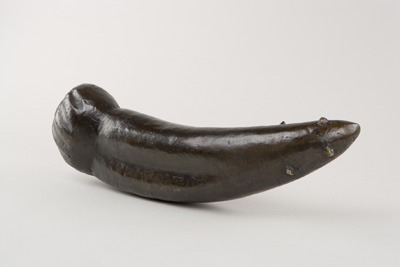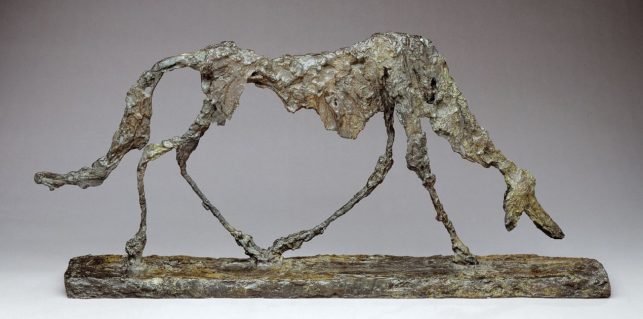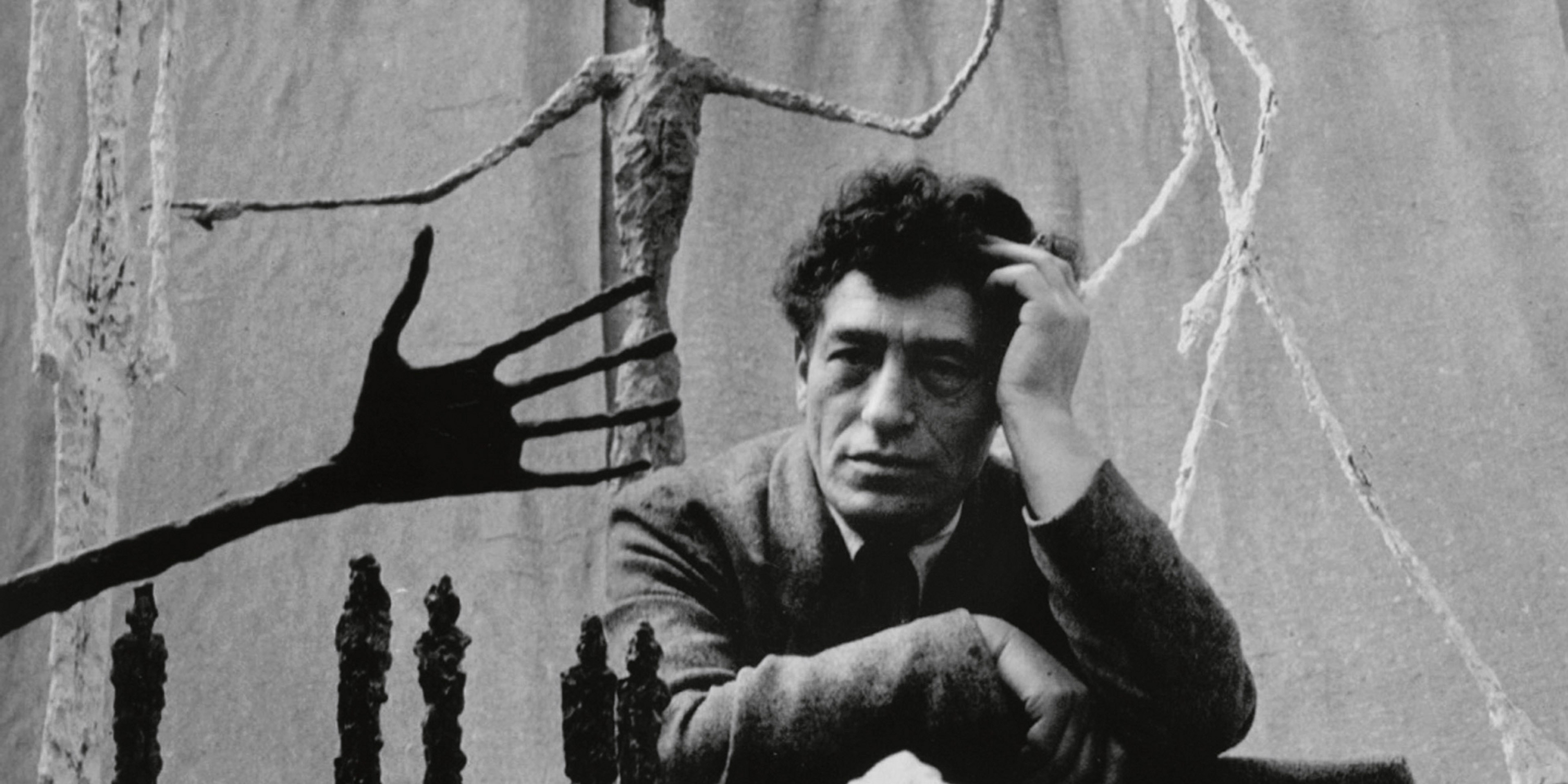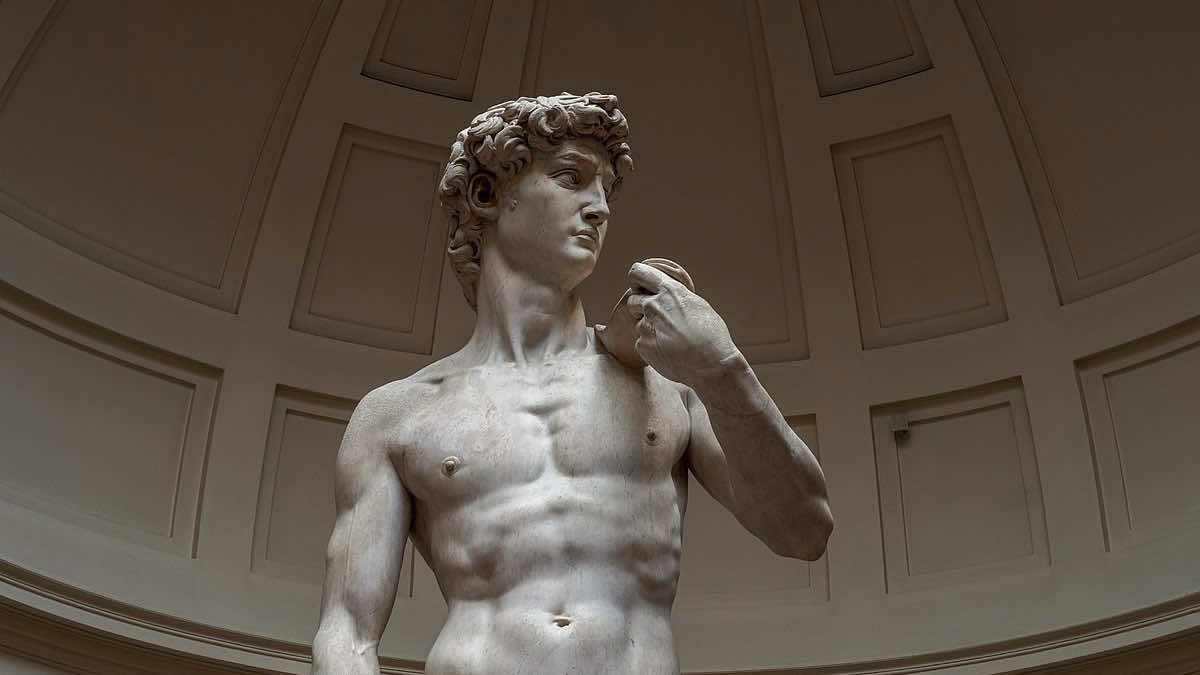
The 8 Most Famous Sculptures by Alberto Giacometti

Alberto Giacometti is undeniably one of the major figures of post-war modern sculpture. Not only was he a sculptor, but he also expressed his vision through figurative painting and drawing. Fascinated by the human nature, the artist’s career continued to evolve through his numerous encounters with fellow avant-garde artists and other influential intellectuals of the time. However, his style remains recognizable among a thousand: spindly figures, often in motion and enclosed in a limited space that echoes his research around the scale. Most of his work was made in his tiny studio in the Parisian district of Montparnasse, a prominent artistic area. Today, and just for you, the Artsper team has curated a selection of the 8 most famous sculptures by Alberto Giacometti… Let’s take a quick look at the iconic career of the Swiss artist!
1. Spoon Woman (1927)

1927 marks the creation of Spoon Woman. The piece was born of Alberto Giacometti’s fascination with traditional African art. During his youth, the artist was also fascinated by ancient Greek sculpture and Cubism. This iconic work of art made in plaster was inspired by a ceremonial spoon from West Africa. Spoon Woman reflects to perfection the clean aesthetics of the young multi-disciplinary artist, who had just moved to Paris with his brother Diego, who was a designer himself. At the time, Giacometti’s sculptures were influenced by his readings and frequent visits to Parisian museums, where he discovered non-Western art.
2. Disagreeable Object (1931)

Entitled Disagreeable Object, this sculpture was first conceived in plaster, then translated into wood, and finally cast in bronze in 1961. This last technique was to be the one Alberto Giacometti favored throughout his career… The particularity of this work lies in its perfect transcription of the artist’s surrealist period. Resting on its side and not on a pedestal, its eroticism and its double interpretation, at the crossroads of object and work of art, generate uneasiness and earn it the title of the ultimate surrealist sculpture.
3. The Nose (1947)

Following his exclusion from the Surrealist group by André Breton in 1935 because of his use of figuration and models, Alberto Giacometti became passionate about the study of the human nature. Drawn to philosophy, he surrounded himself with thinkers, including Jean-Paul Sartre, the emblematic figure of existentialism. In the making of this enigmatic and nightmarish work entitled The Nose, the artist relentlessly explored the crucial notions of scale, proportion and distance, and went back to using the cage, which he worked with during his surrealist days.
4. Man Pointing (1947)

With Man Pointing, Giacometti achieves the feat of transcribing movement into immobility. This piece emphasizes on the importance of the sign, echoing the artist’s research on phenomenology. In 2015, the sculpture sold for $141 million at Christie’s in New York, making it the world’s most expensive sculpture sold at auction. It is considered one of Giacometti’s most sublime pieces, especially since it is one of the few bronzes to have been hand painted by the artist.
5. City Square I (1948)

The first version of City Square was created in 1948, as Giacometti returned to the bustle of Paris after the liberation and encountered the post-war turmoil. City Square I is his first multi-figure sculpture since his return to Paris in September 1945 after his exile in Switzerland. The thick and solid base of the sculpture contrasts with the thinness and the fragility of the creatures. Spaced out but not isolated, they seem to be wandering aimlessly, dazed by melancholy.
6. The Chariot (1950)

Alberto Giacometti, the leading sculptor of the 20th century, scored a master stroke in 1950 with The Chariot. This painted bronze depicts a filamentous divine-like female figure. She’s standing straight on a cart, which is supported by two wooden legs itself. This mysterious piece questions the viewer; is the figure in balance? Is it moving forward? Or is it moving backwards? In The Chariot, Giacometti makes it a priority to explore the notions of movement and stasis. It allows him to observe a silhouette that stands out from the ground, and thus to read it in its purest form.
7. The Dog (1951)

Giacometti once said: “What interests me is the resemblance, that is to say, what for me is the resemblance: what makes me discover a little of the outside world.” It is by observing the world around him and by paying particular attention to the emotions that come to him while experiencing his surroundings that the artist develops his pieces. Giacometti’s dog, with its skinny silhouette and metal frame, is reminiscent of the fragility of mankind, and of the room that solitude takes in everyone’s life. Both disturbing and touching, this famous sculpture echoes the outside world, where misery rubs shoulders with beauty, and where the harmed legs of a stray dog form a heart for those who wish to see it…
8. The Walking Man (1960)

It would be a crime to end this list without mentioning Alberto Giacometti’s best work, The Walking Man. This artwork follows in the footsteps of Rodin, who in 1900 assembled the legs of Saint John the Baptist and a muscular torso in his version of The Walking Man. In contrast, Giacometti’s sculpture is threadlike. His stiff figure seems to be moving forward with great difficulty. However, its oversized feet anchor it to a thick pedestal that acts as a ground and ensures its stability. The Walking Man, originally a Walking Woman, is heavily inspired by Egyptian statuary. However, it marks the spirits by its timeless nature… This was yet another attempt from the artist to answer this haunting question: how to represent movement in absolute immobility?
To conclude…
We hope this non-exhaustive list of Alberto Giacometti’s most famous sculptures gave you a proper overview of his outstanding œuvre! His impact on modern sculpture is unprecedented, and led him to be an inspiration for a long list of successors. More than his pieces, it is his involvement in the Parisian intellectual circles of the post-war period that have marked the history of art forever. It would therefore be incorrect to reduce Giacometti’s career to that of a sculptor! Indeed, drawing and painting were crucial in his work as he felt they were inseparable from sculpture. So, would you like to discover Alberto Giacometti’s works available on Artsper?

About Artsper
Founded in 2013, Artsper is an online marketplace for contemporary art. Partnering with 1,800 professional art galleries around the world, it makes discovering and acquiring art accessible to all.
Learn more













